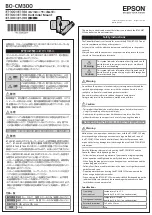
Discharged Battery:
The Draganflyer V Ti is designed to hover at approximately 1/2 throttle with the supplied battery
pack in the fully charged state. As the battery approaches the end of its charge, you will notice that
almost maximum throttle position is required to maintain a hover. This is one way you can tell if
the battery is running low, and it is at this point that you should begin your landing.
The Draganflyer V Ti also has a safety feature to prevent the battery from being discharged too far.
When the battery voltage begins to drop the helicopter enters a forced landing condition. All of the
controls will be the same except the maximum allowable throttle will be slowly reduced. In this
mode all of the led 'eyes' will blink together. Land and recharge the battery.
Attempting to fly past
this past this point will permanently damage the battery.
Flight Time:
The Draganflyer V Ti should be able to hover for approx. 13-17 minutes on a fully charged battery
pack. After that time, it will descend to a point where it will fly approx. a foot off the ground. After
10 to 20 seconds, you will notice that it takes more than 3/4 throttle to maintain a low hover. At this
point the Draganflyer V Ti will start to become somewhat unstable and it is best to land and recharge
the battery. This period of instability at the end of the battery charge is normal and is caused by the
lower battery voltage in the discharged state.
Maintenance
Unlike a traditional helicopter, the Draganflyer V Ti requires very little maintenance, however there
are some simple tasks which must be performed on a regular basis. Prior to each flight, you should
check the following:
• Ensure the rotor screws have not loosened.
• Check the alignment of the rotors by aligning their
flat center section with the horizontal part of the circuit
board(this step is especially important after a crash)
• Check the rotor blades for chips and cracks. Small chips on
the leading edge can be smoothed out using 150 grit sandpa-
per. Cracked rotor blades should be replaced immediately to
avoid in-flight failure.
• Regularly clean thermal intelligence sensors with alcohol and
soft cloth.
• Inspect the helicopter frame for cracks in the nylon components or carbon-fiber tubes. Twist each
motor mount from side to side. If the mount is cracked, the nylon will separate(typically where
the mount clamps to the carbon-fiber tube). If you are able to easily twist the mount assembly 90
degrees from vertical and the assembly has a ‘spongy’ feel to it, it is very likely you have a cracked
carbon-fiber tube. In this case the tube
must
be replaced prior to the next flight.
• Extend the transmitter antenna fully and inspect it for serious bends or cracks in the antenna.
• Check the circuit board to ensure it is firmly retained in the vertical risers.
• As well, on a regular basis(every 1-3 hours of flight time) you should perform the following
additional tasks:
• Re-tighten all of the allen-head bolts in the frame(Be careful not to overtighten!) as well as the
screws retaining the motors in their mounts and the acorn nuts on the carbon-fiber base plate.
• After many hours of flying the fuse on the circuit board may need to be replaced.
25
Flight Preparation and Trimming
continued
DF5_manual_Imposed_Jan4_05 1/7/05 10:38 AM Page 29
Summary of Contents for DraganFlyer V Ti
Page 1: ...INVENTING THE FUTURE OF RADIO CONTROLLED FLIGHT...
Page 21: ...20...



































